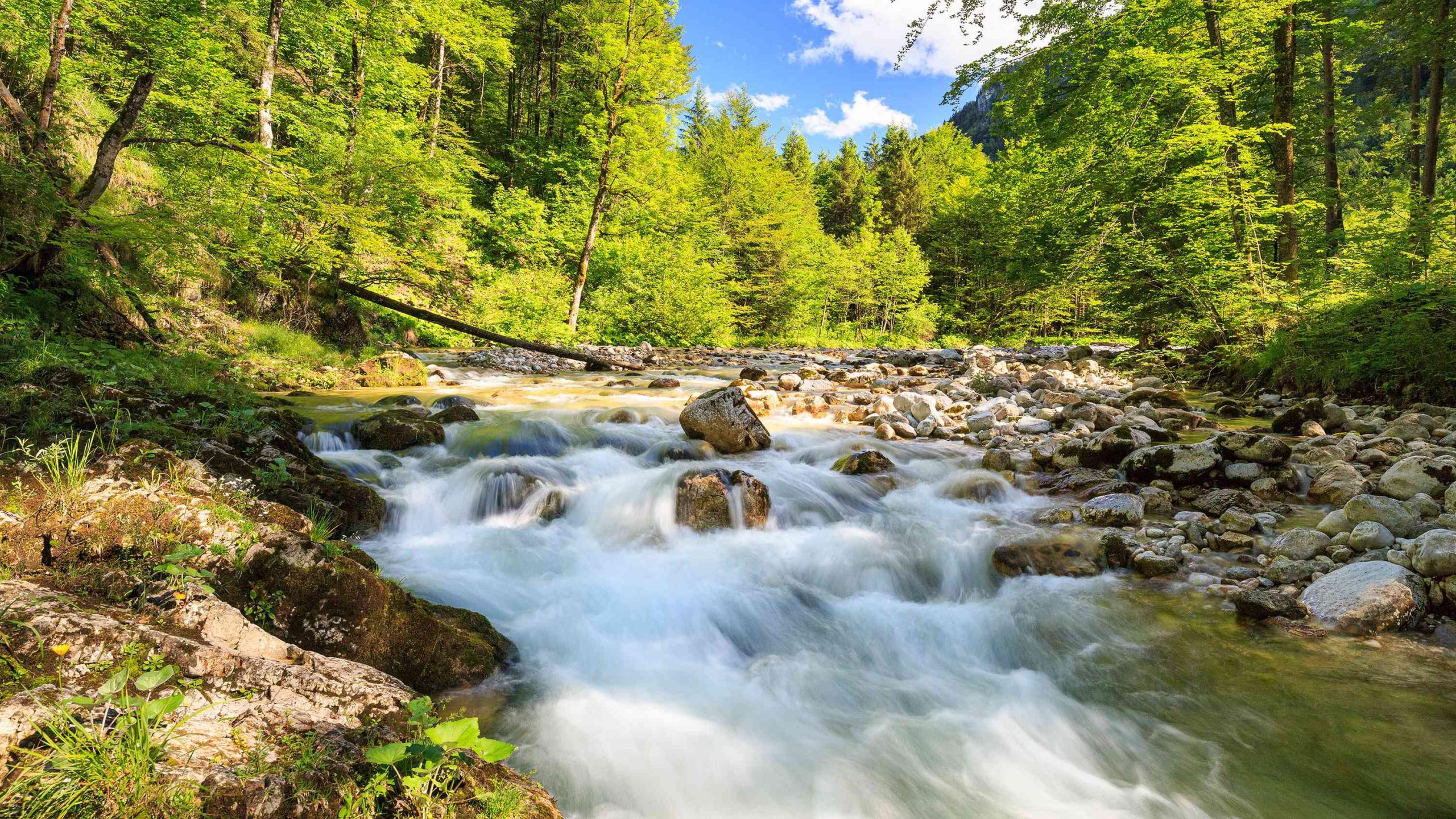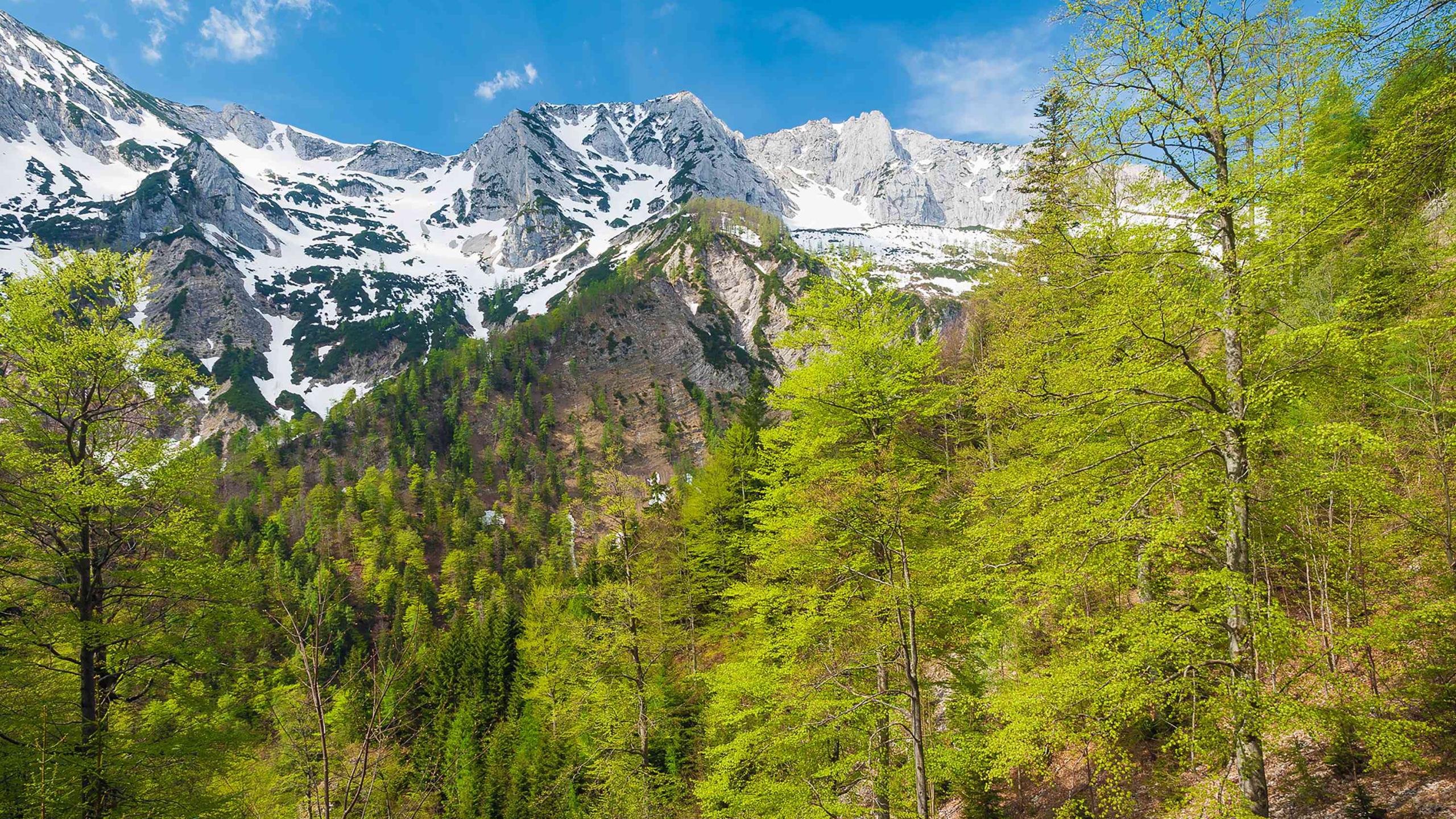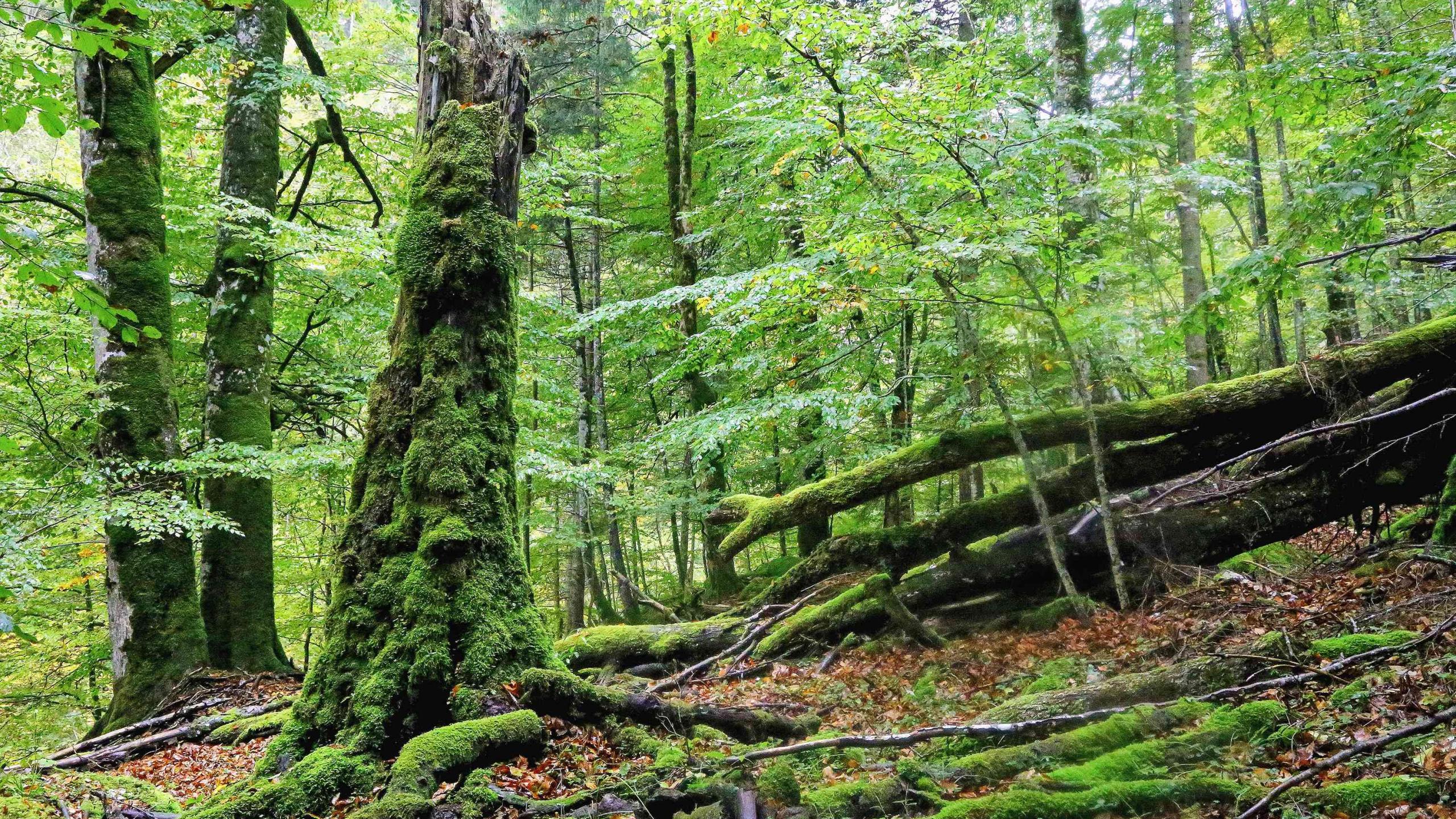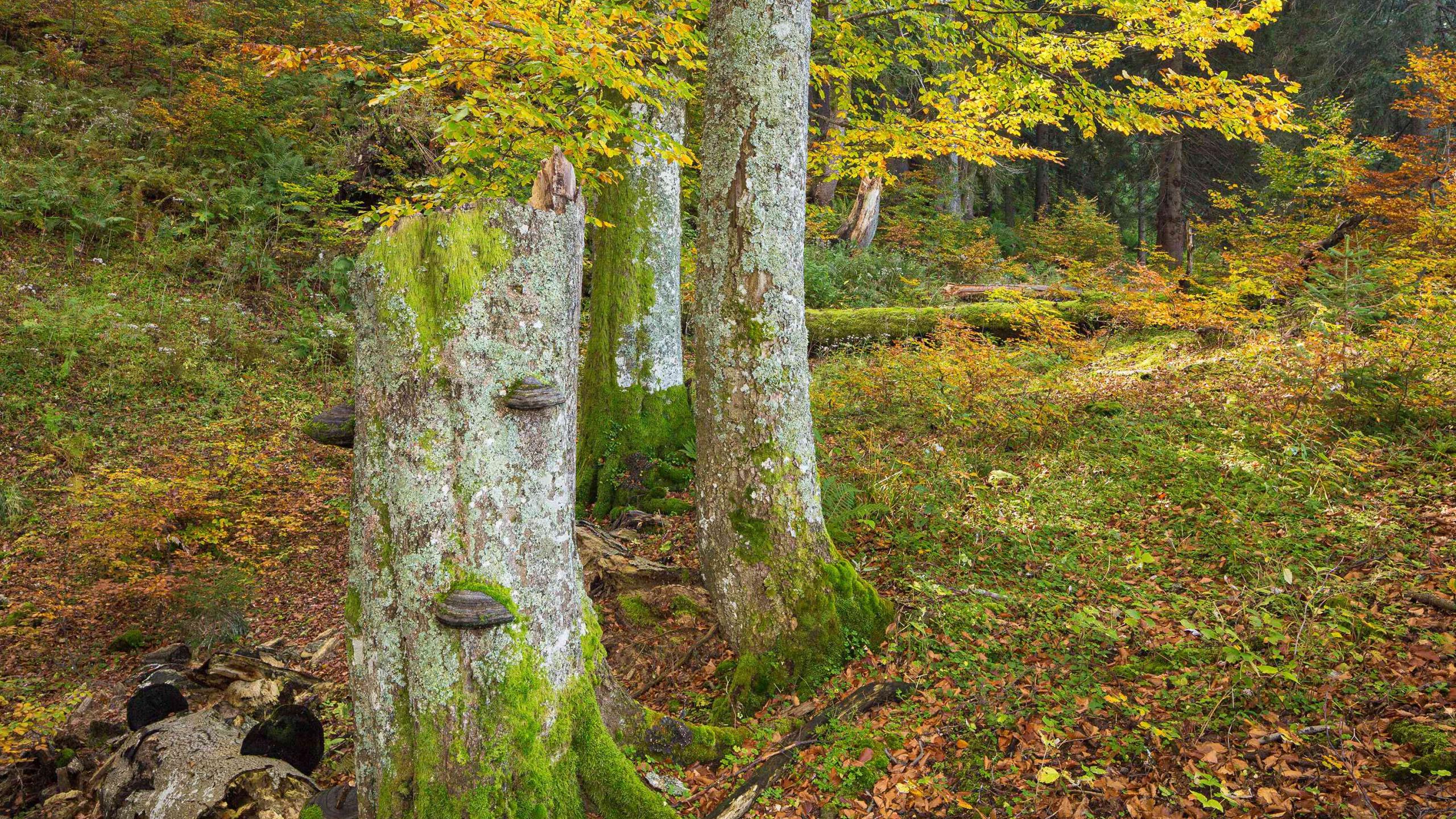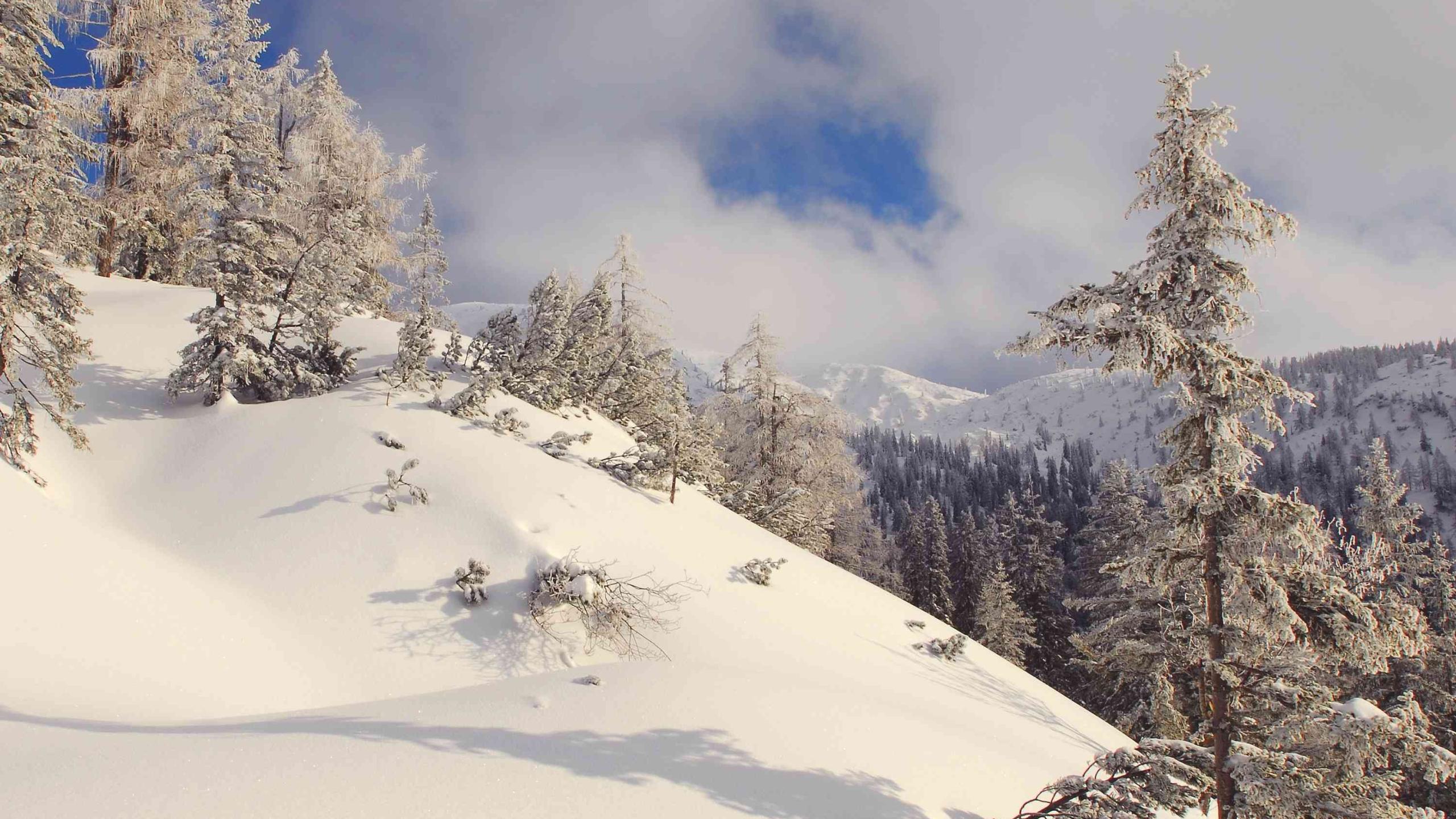KALKALPEN NATIONAL PARK
AUSTRIA'S FOREST NATIONAL PARK
The Kalkalpen National Park protects Austria's largest contiguous forest wilderness. It is the most important forest national park in the Alpine region. The protected area includes the Reichraminger Hintergebirge and the Sengsengebirge in the south-east of Upper Austria. Its varied and closely interwoven habitat mosaic, consisting of around 30 forest types, is the foundation of a high level of biodiversity. More than 10,000 species of animals, plants and fungi, including highly demanding primeval forest relict species, can be found in the various forests. By abandoning human use, dismantling infrastructure and removing obstacles to the free flow of natural processes since its establishment, the future prospects of high-ranking protected species in the 16,000-hectare, non-intervention natural zone have improved enormously.
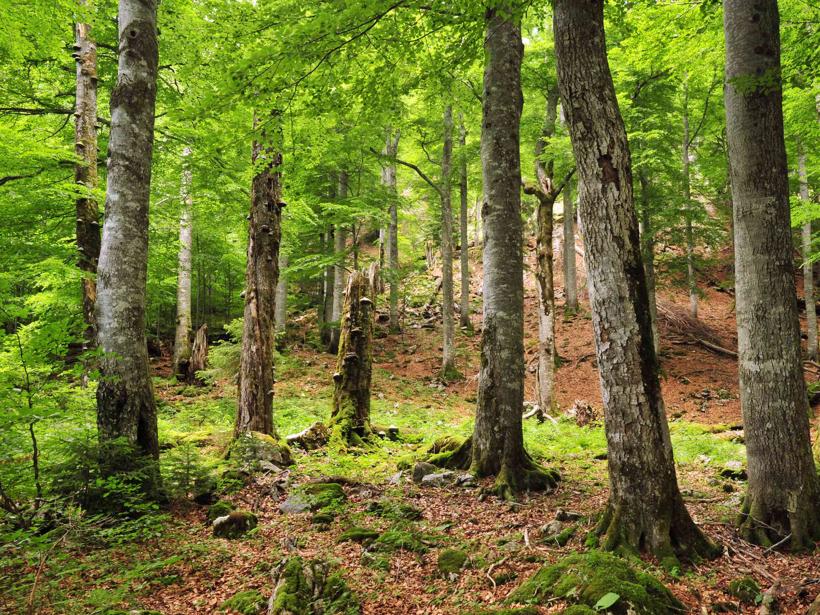
Back to the primeval forest
Like all forests in the Enns and Steyr valleys, the former forests in today's Kalkalpen National Park have been used since the early Middle Ages. The wood was turned into charcoal in charcoal kilns, as the numerous scythe, knife, hoe and hammer forges needed huge quantities of it. The original forests were thus wiped out except for small remnants. The remaining islands of primeval forest provide a habitat for highly endangered relict forest species, especially those that depend on lush dead and old wood and natural forest dynamics. 15,000 hectares of National Park Forest have been designated as a biotope protection forest in accordance with Section 32a of the Forestry Act. Since then, everything has changed. Only nature is allowed to reign unrestricted in the nature zone. The forest may be restored in a process lasting several centuries primeval forest .
Our natural heritage
The Kalkalpen National Park impresses with its wild forests, hidden gorges and panoramic mountain peaks. It is home to rare animal species. The ancient beech forests are recognized as a UNESCO World Natural Heritage Site. Water is another valuable treasure. Over 800 springs feed the longest natural stream system in the Northern Limestone Alps.
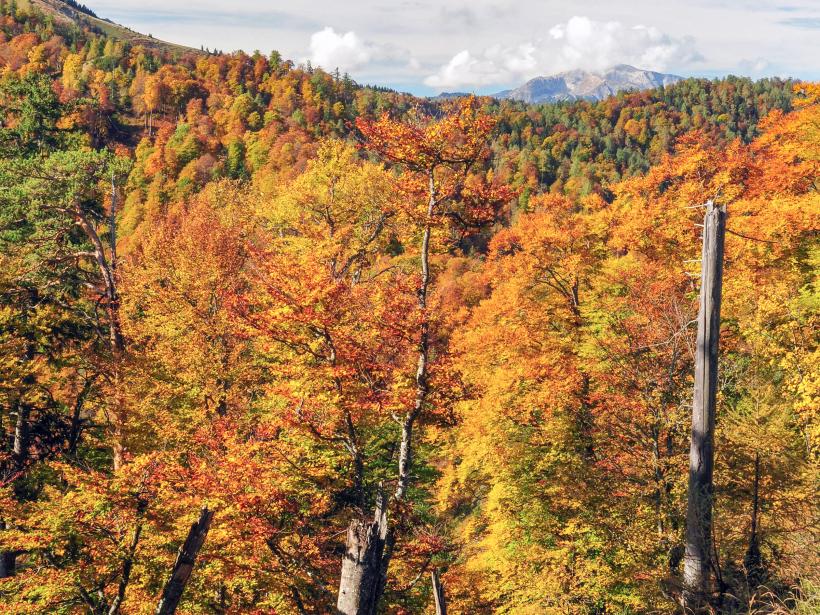
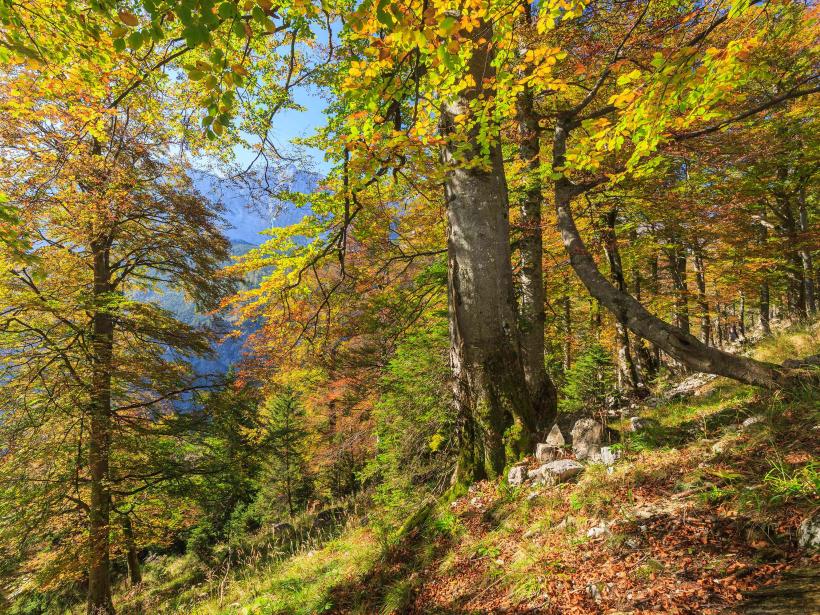
UNESCO World Natural Heritage Site
OLD BEECH FORESTS AND PRIMEVAL BEECH FORESTS IN THE KALKALPEN NATIONAL PARK
With its valuable old forests and primeval beech forests, Kalkalpen National Park is the most important forest national park in the Alps. The older the forest, the richer its life. More than 10,000 species of animals, plants and fungi can be found in the various types of beech forest. With an area of 5,252 hectares, Kalkalpen National Park is not only the largest beech forest reserve in the Alps, but also the oldest beech tree with a proud age of over 550 years.







